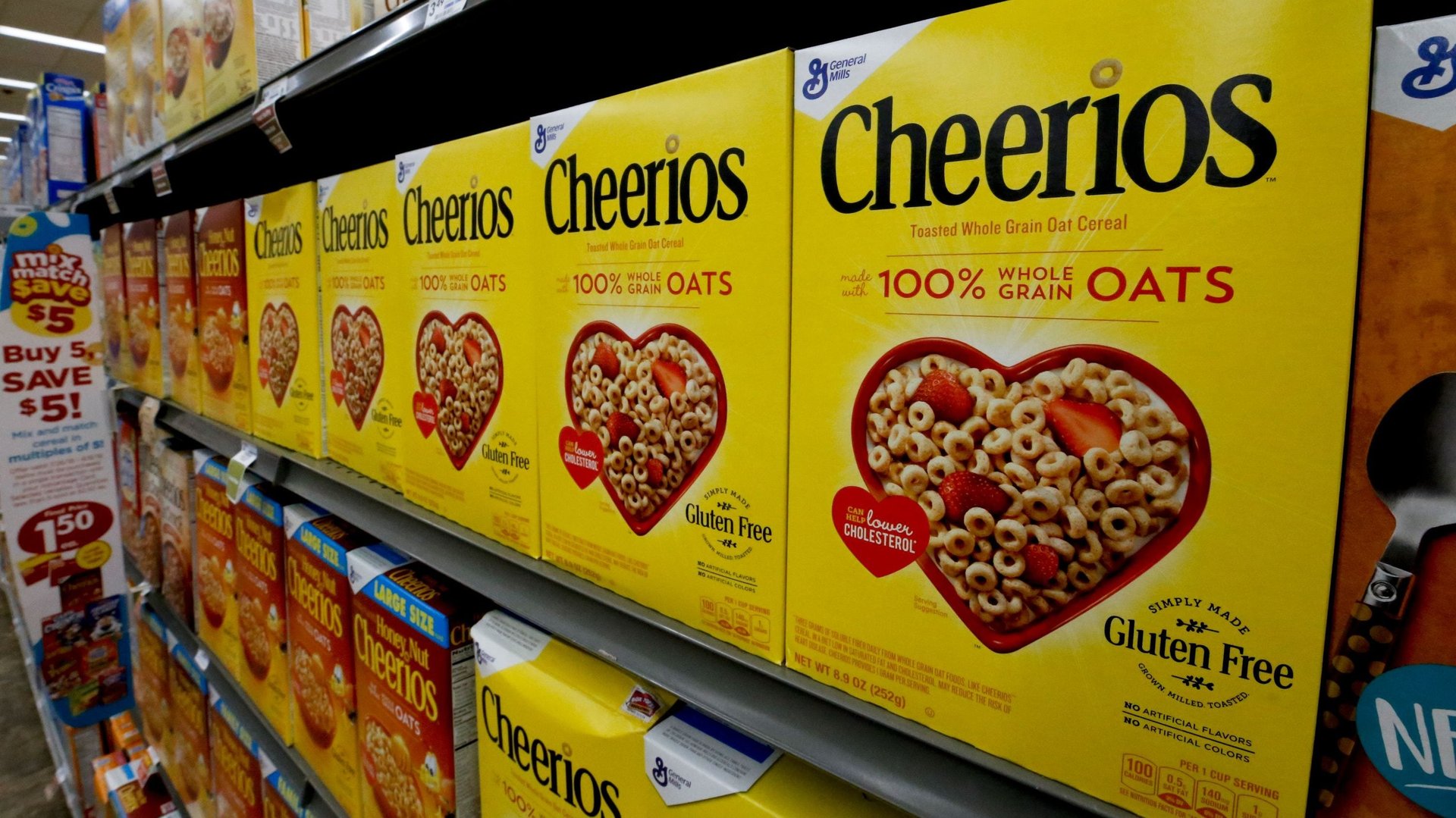Your wholesome breakfast of oats may include weedkiller
Oatmeal, with its hearty dose of fiber, is a great breakfast choice for staying full and energetic. It feeds a crowd for pennies. It also, likely, contains a hearty does of glyphosate, better known as the Monsanto weedkiller Roundup.


Oatmeal, with its hearty dose of fiber, is a great breakfast choice for staying full and energetic. It feeds a crowd for pennies. It also, likely, contains a hearty does of glyphosate, better known as the Monsanto weedkiller Roundup.
Today (Aug. 15), the Environmental Working Group released a study that tested 61 oat products, including oatmeal, granola and granola bars, for glyphosate. Of the 45 items made with conventionally grown oats, 43 tested positive, with 31 above the EWG’s threshold for safety. Five of the organic products tested positive, as well.
One of the healthiest foods on the list, Quaker Old Fashioned Oats, were actually found to have the highest levels of glyphosate, at more than 1,000 parts per billion—the EWG’s child-protective benchmark is 160 parts per billion. Cheerios, Lucky Charms, and Barbara’s Multigrain Spoonfuls were also found to contain significant amounts.
In a statement to Fortune, Quaker said: “We proudly stand by the safety and quality of our Quaker products. Quaker does not add glyphosate during any part of the milling process. Glyphosate is commonly used by farmers across the industry who apply it pre-harvest.”
More than 200 million pounds of glyphosate are sprayed on crops in the US each year. Glyphosate is most often used in Roundup Ready corn and soybean crops that have been genetically modified to be resistant to the powerful herbicide—weeds die, the crops remain for better growth and ease of harvesting. The practice of spraying glyphosate on other crops, including oats, lentils, and sugar beets, prior to harvest to dry them out and speed ripening, while not standard, is a strategy farmers sometimes employ.
In an emailed statement to Quartz, Monsanto wrote:
When it comes to pesticides residues, the EPA and other regulatory authorities have strict rules. The EPA sets daily exposure limits at least 100 times below levels shown to have no negative effect in safety studies. Even at the highest level reported by the EWG (1,300 ppb), an adult would have to eat 118 pounds of the food item every day for the rest of their life in order to reach the EPA’s limit. These numbers translate to 9 ½ servings every hour of the day without sleep for a person’s entire life. The EWG’s claim about cancer is false. Glyphosate does not cause cancer. Glyphosate has a more than 40-year history of safe use. Over those four decades, researchers have conducted more than 800 scientific studies and reviews that prove glyphosate is safe for use.
There is not a broadly accepted safe level of glyphosate exposure, in food or as an agricultural worker. The World Health Organization has called it a probable carcinogen, as has the state of California. The US Environmental Protection Agency has a glyphosate risk assessment in draft form that “concludes that glyphosate is not likely to be carcinogenic to humans. The Agency’s assessment found no other meaningful risks to human health when the product is used according to the pesticide label.” Last week, a San Francisco jury awarded a school groundskeeper who had repeatedly been exposed to glyphosate and subsequently developed non-Hodgkin lymphoma $289 million in a lawsuit against Monsanto.
This is not the first time glyphosate has been found in popular packaged foods. In 2017, Ben & Jerry’s suffered a blow to the brand’s crunchy image when the Organic Consumers Association announced that they had found low levels of glyphosate in 10 varieties of its ice cream.
Earlier this year, The Guardian reported on internal US Food and Drug Administration documents that found elevated glyphosate levels in crackers, corn meal, and, yes, oatmeal. In an email to his colleagues about testing methods, an FDA chemist wrote that broccoli was the only food from his home that he had found to be glyphosate-free, noting, “I have brought wheat crackers, granola cereal and corn meal from home and there’s a fair amount in all of them.”